The Modern House publishes book charting Britain’s finest modernist homes
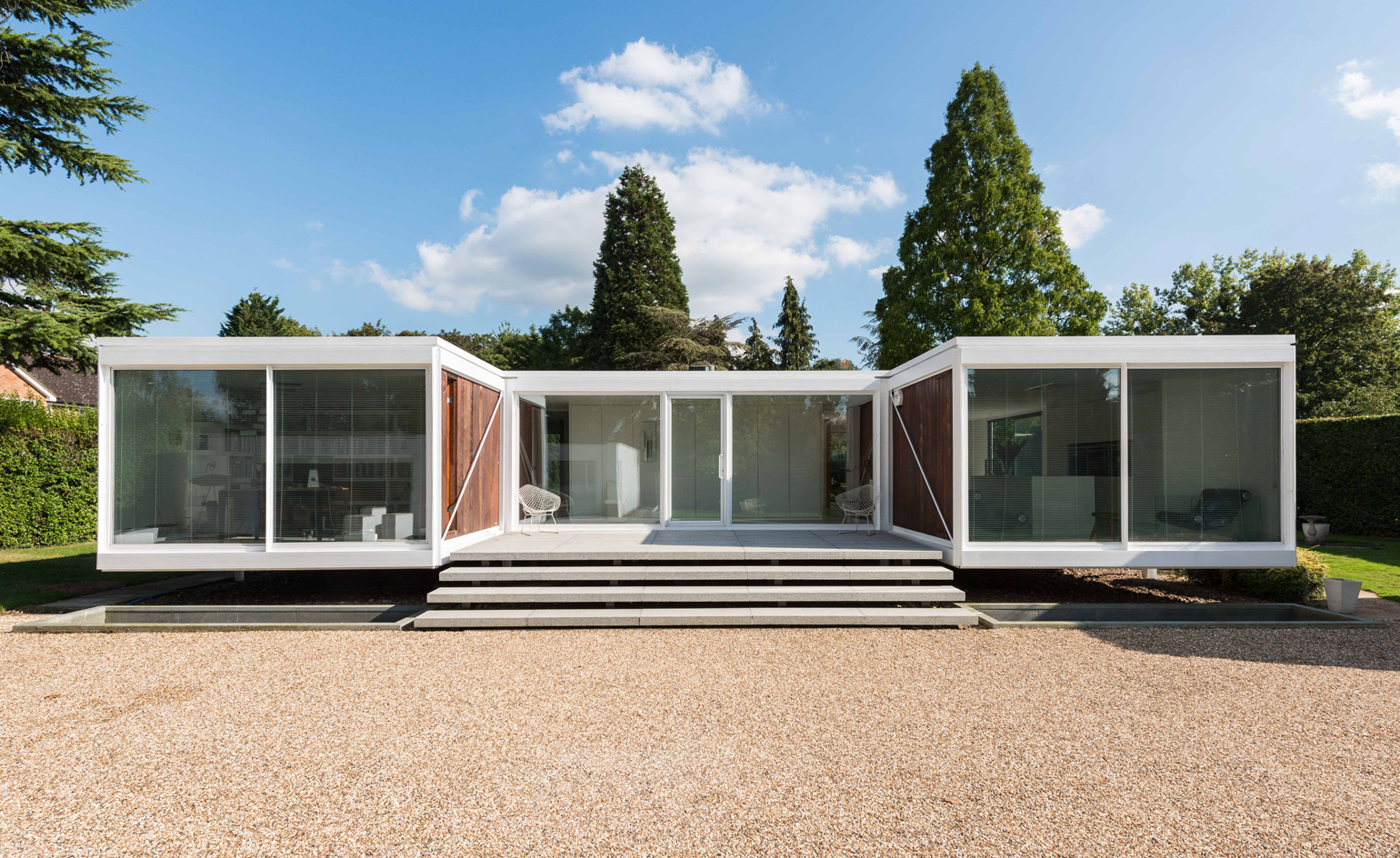
Celebrating a decade in the business, UK-based real estate agency The Modern House has launched an eponymous book exploring its most extraordinary properties, from Su and Richard Rogers’ modernist Wimbledon landmark to apartments in the Barbican and beyond. (The company’s fitting tagline: ‘Selling Britain’s finest modern architecture’).
The Modern House was co-founded in 2005 by former architecture/design journalists Albert Hill and Matt Gibberd (himself the grandson of modernist architect Frederick Gibberd), and together have captured a niche corner of the property market.
Leading with an introductory essay by Wallpaper* editor-at-large Jonathan Bell and published by Artifice Books, the new tome is divided into four themes – town houses, conversions, country houses and apartments. ‘Rather than being an exhaustive survey, this book instead offers our own distinctive snapshot of what it means to live in a modern way in Britain,’ explain Gibberd and Hill in the books foreword.
To wit, the book is an ode to Britain’s remarkable modernist architecture, spanning homes completed in the 1930s until as recently as two years ago. Alongside the usual suspects (London’s seminal Isokon Building, for one), The Modern House also hones in on lesser known architectural gems, as well as younger architects such as Zoe Chan and Merlin Eayrs (their striking Design Award-shortlisted Herringbone House in Dalston marks a new sort of British modernism).
Whether you’re in the market for a starchitect-designed home (Carl Turner's 'ice cube' house is back on the market for a cool £1.595m) or are simply a design-savvy tourist, The Modern House is an indispensible compendium of England’s most enviable residences and interiors.
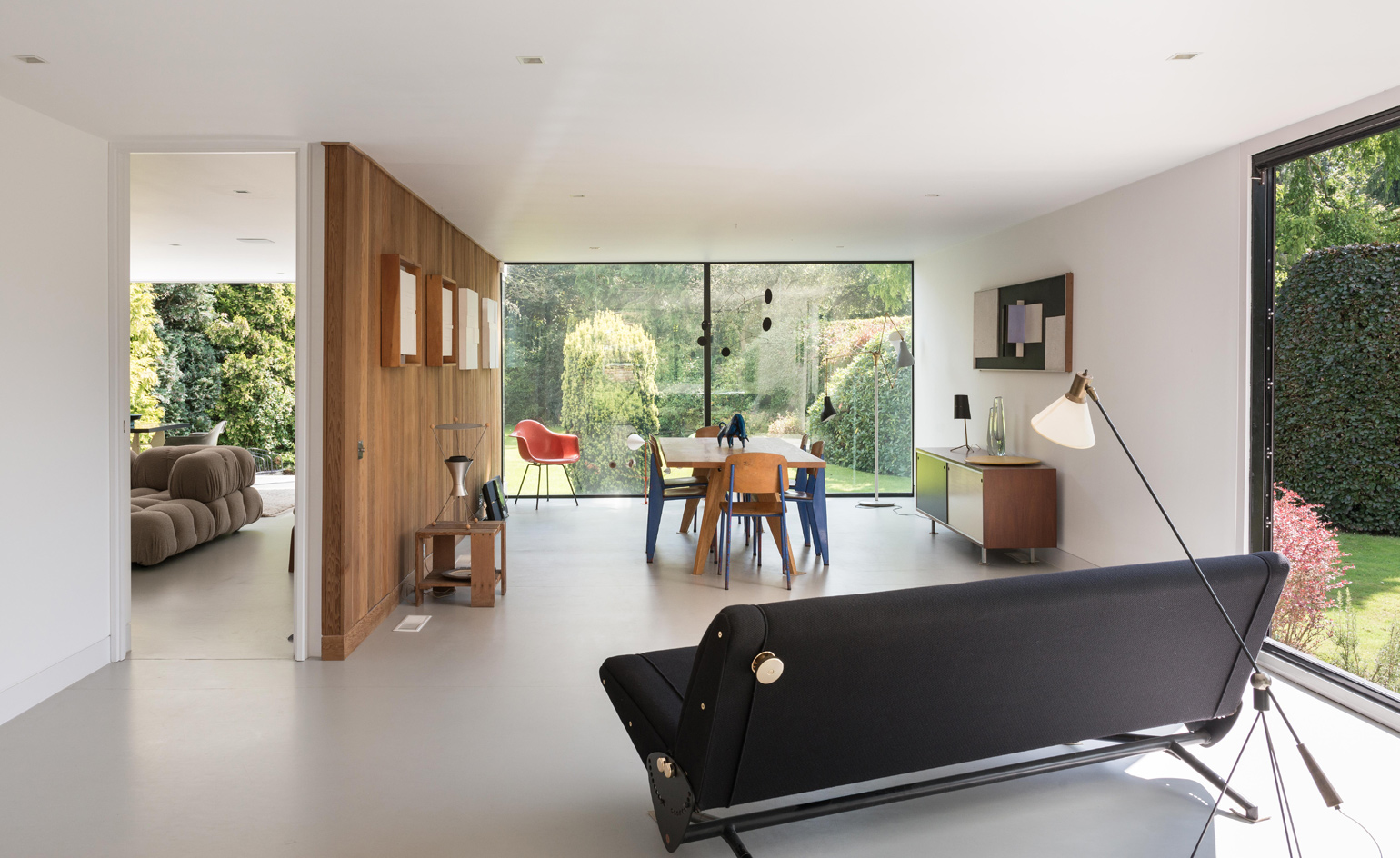
Glazed walls fill Manor Way’s reception rooms with light. The dining room adjoins the kitchen, a near 50ft long room forming one ’wing’ of the plan.
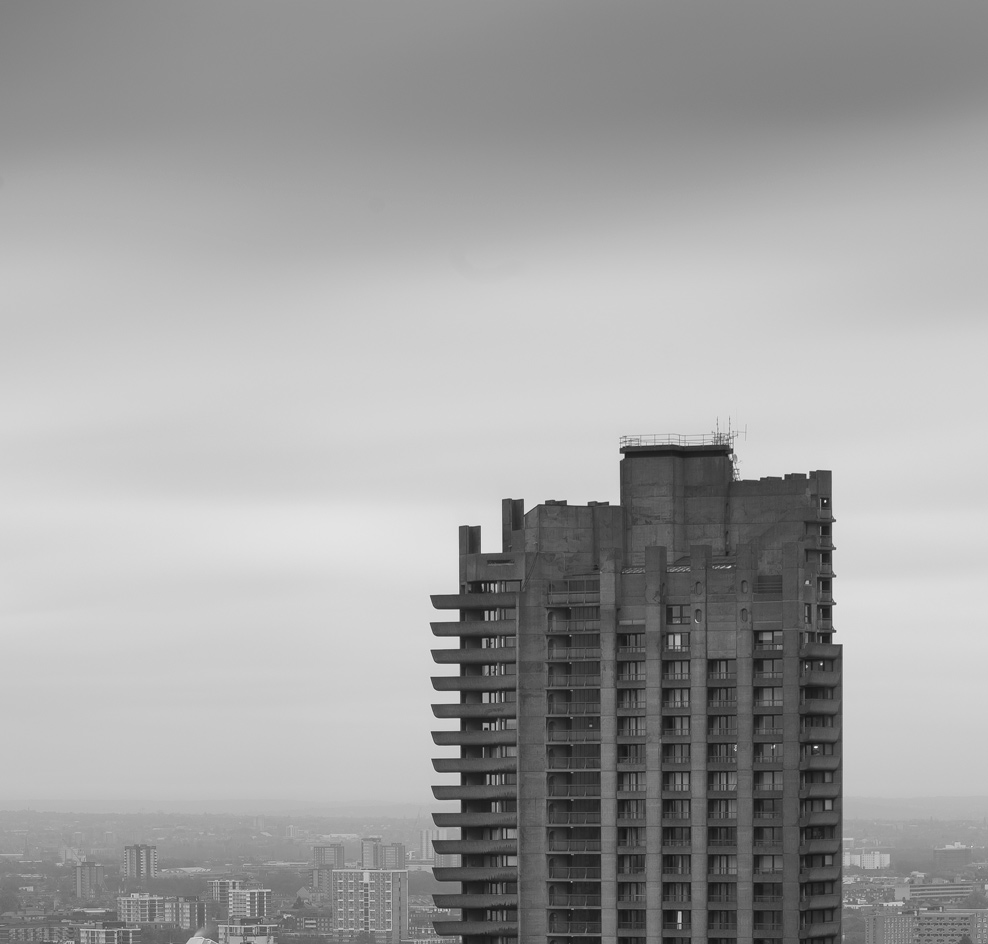
Barbican Estate, by Chamberlin, Powell and Bon, 1975. London’s Barbican is bravura piece of placemaking, with bridges, ramps and endless staircases creating a multiplicity of routes through the concrete and brick complex.
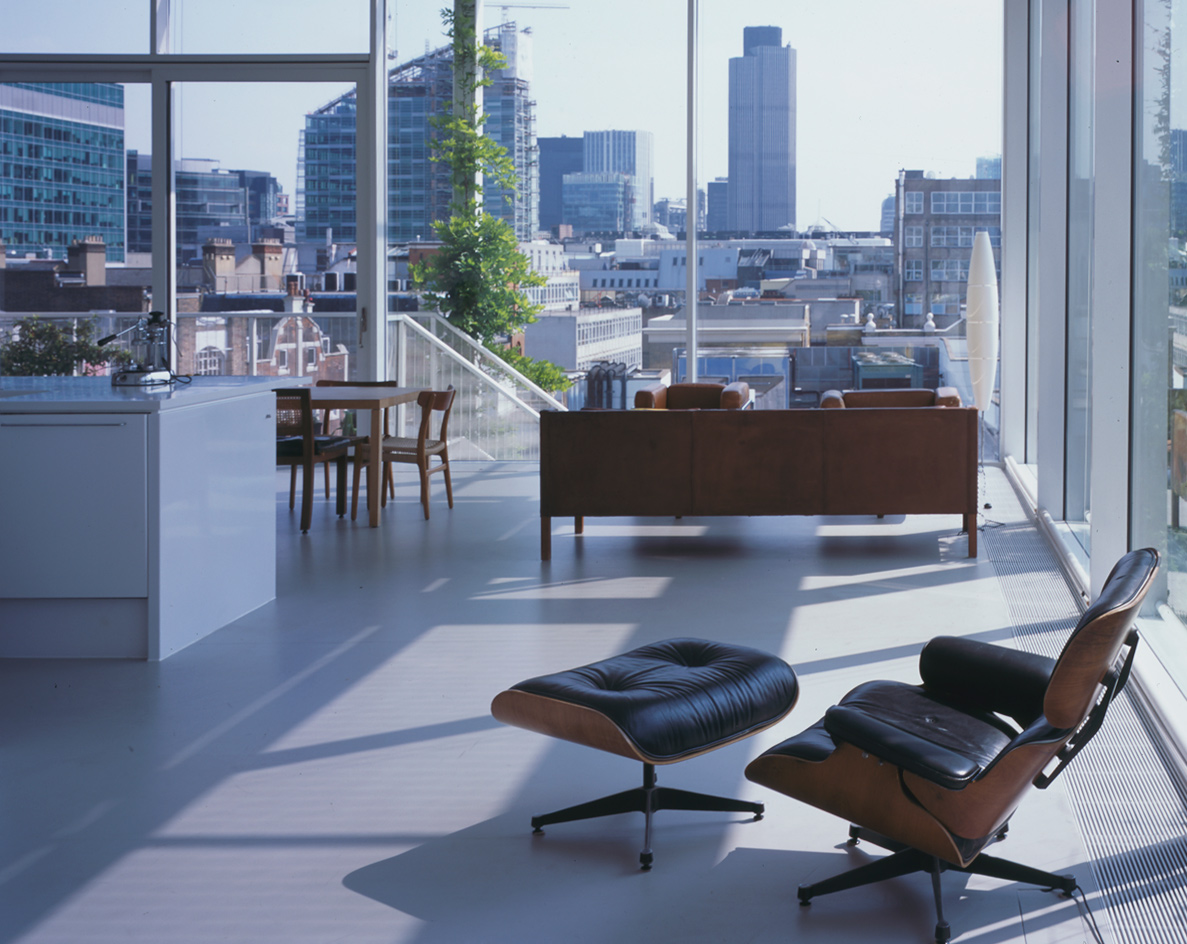
Roof Garden Apartment, by Richard Rogers and Tonkin Liu, 2002. The upper floor of this apartment – a radical addition of a steel structure above a brick warehouse – is given over to a double-height living area with expansive views of London’s skyline.
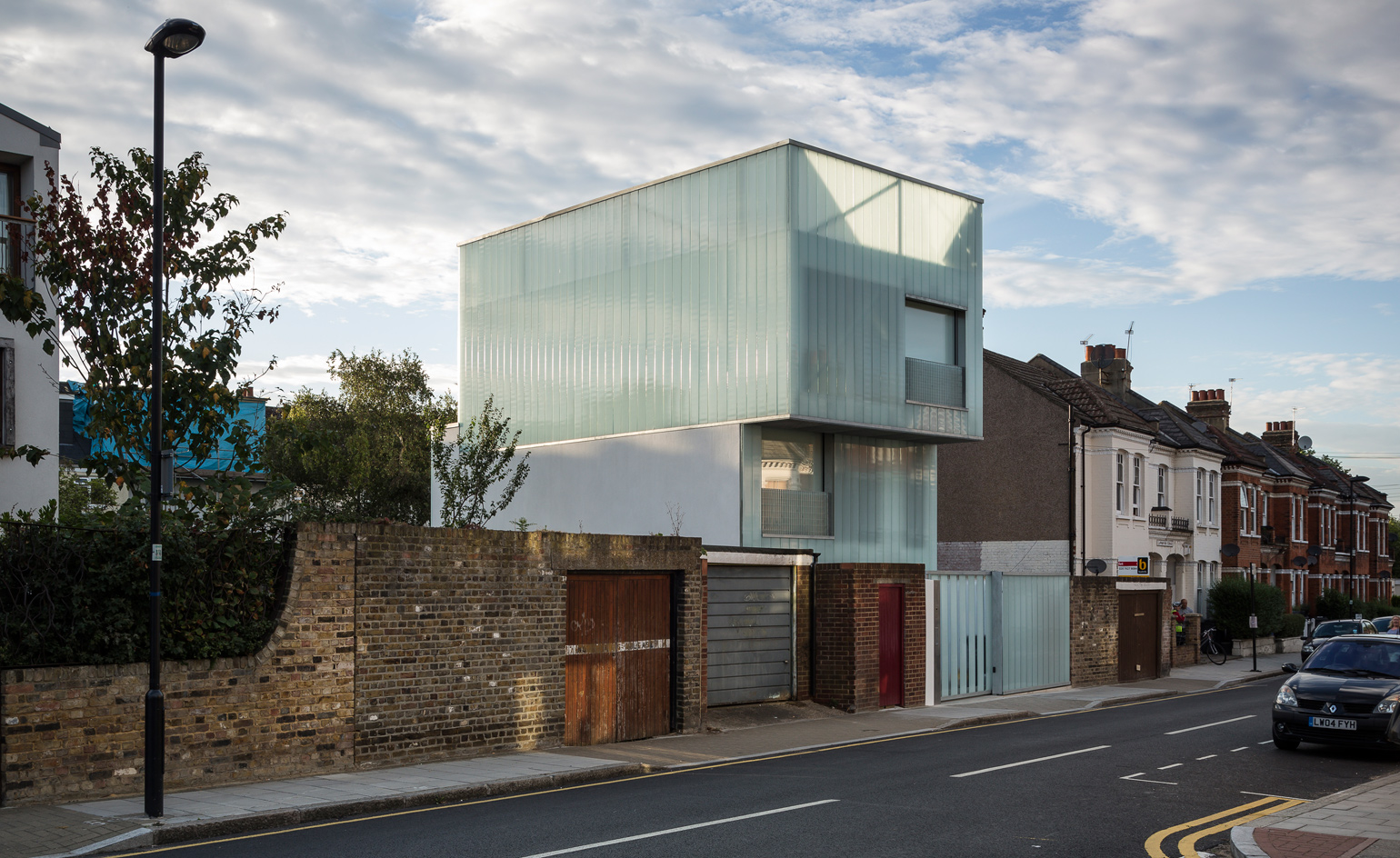
Slip House, by Carl Turner Architects, 2012. When first constructed, Slip House stood alone in the centre of its plot, accentuating the canted arrangement of the stacked floors and the stark simplicity and translucency of the vertical glass fins that clad the upper floors. Since its completion, a new project by the same architects has been built alongside it.
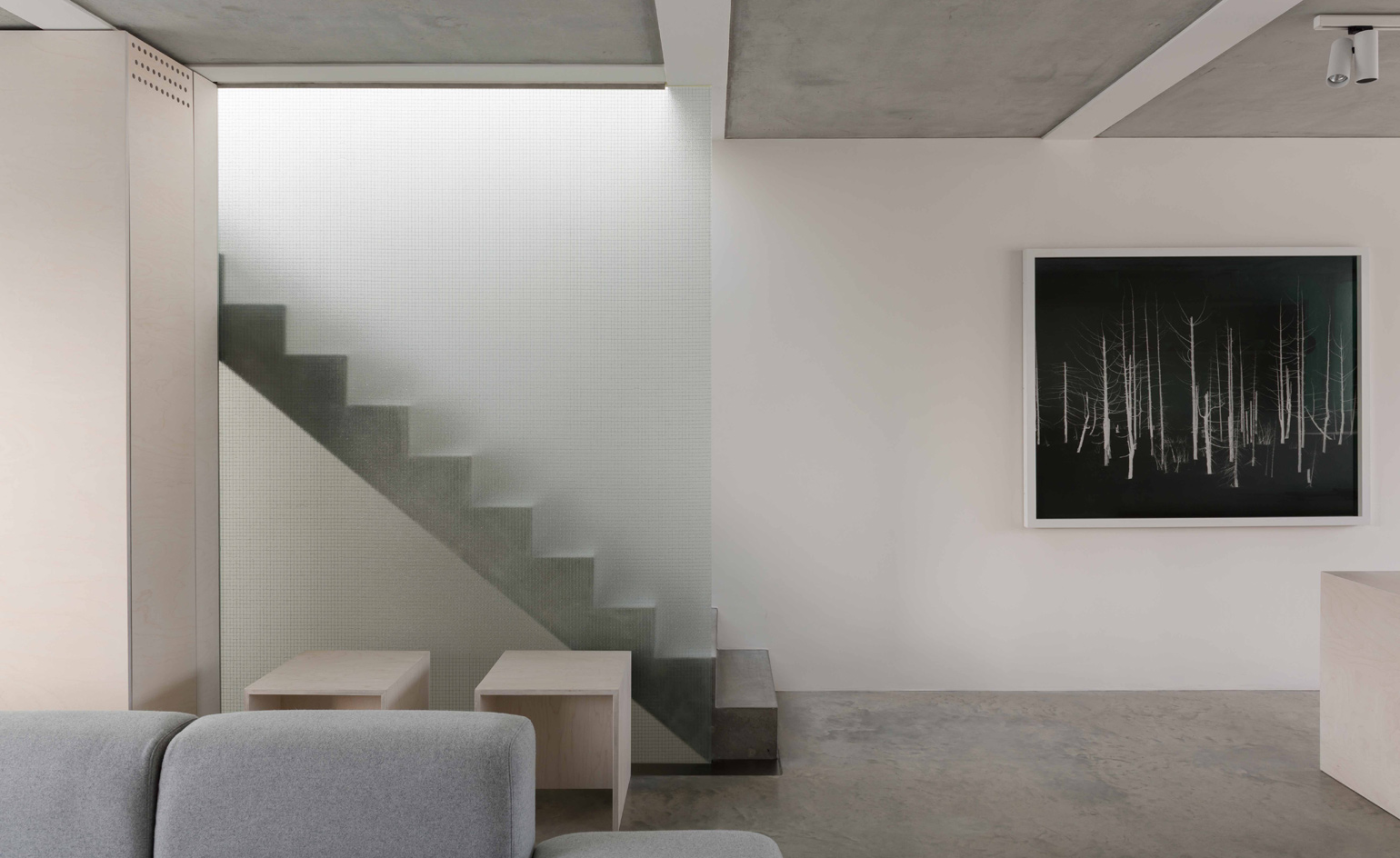
Inside Slip House, the floor, ceiling and staircase are formed from polished concrete, paired with white walls and sliding doors built from whitened birch ply.
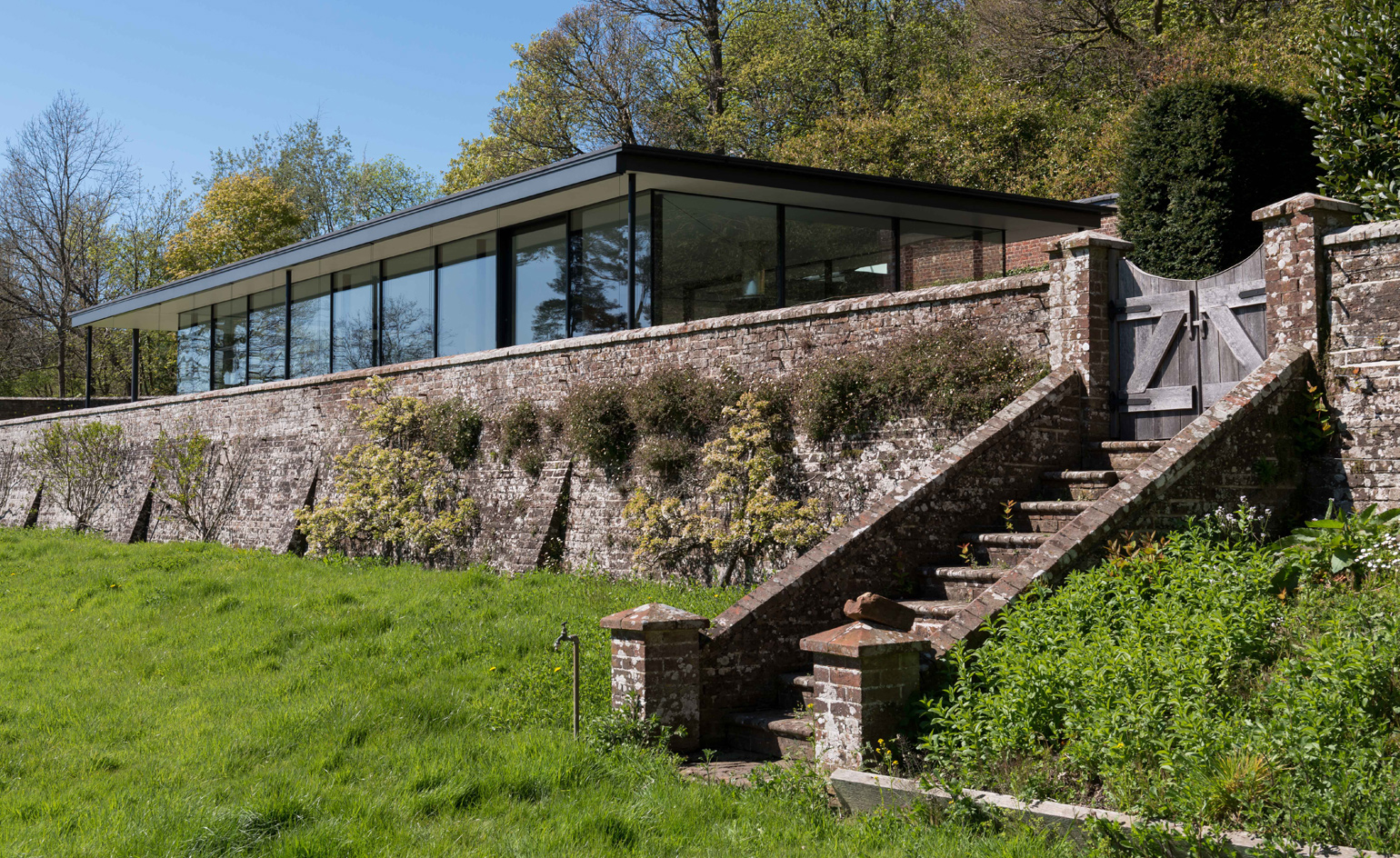
The Walled Garden, by Michael Manser, 2002. This house was inspired by the simplicity of Mies can der Rohe’s Barcelona Pavilion, offering up wonderful view of the Sussex countryside, while the red brick garden walls provide a rich contrast to the lawns, pools and vegetation.
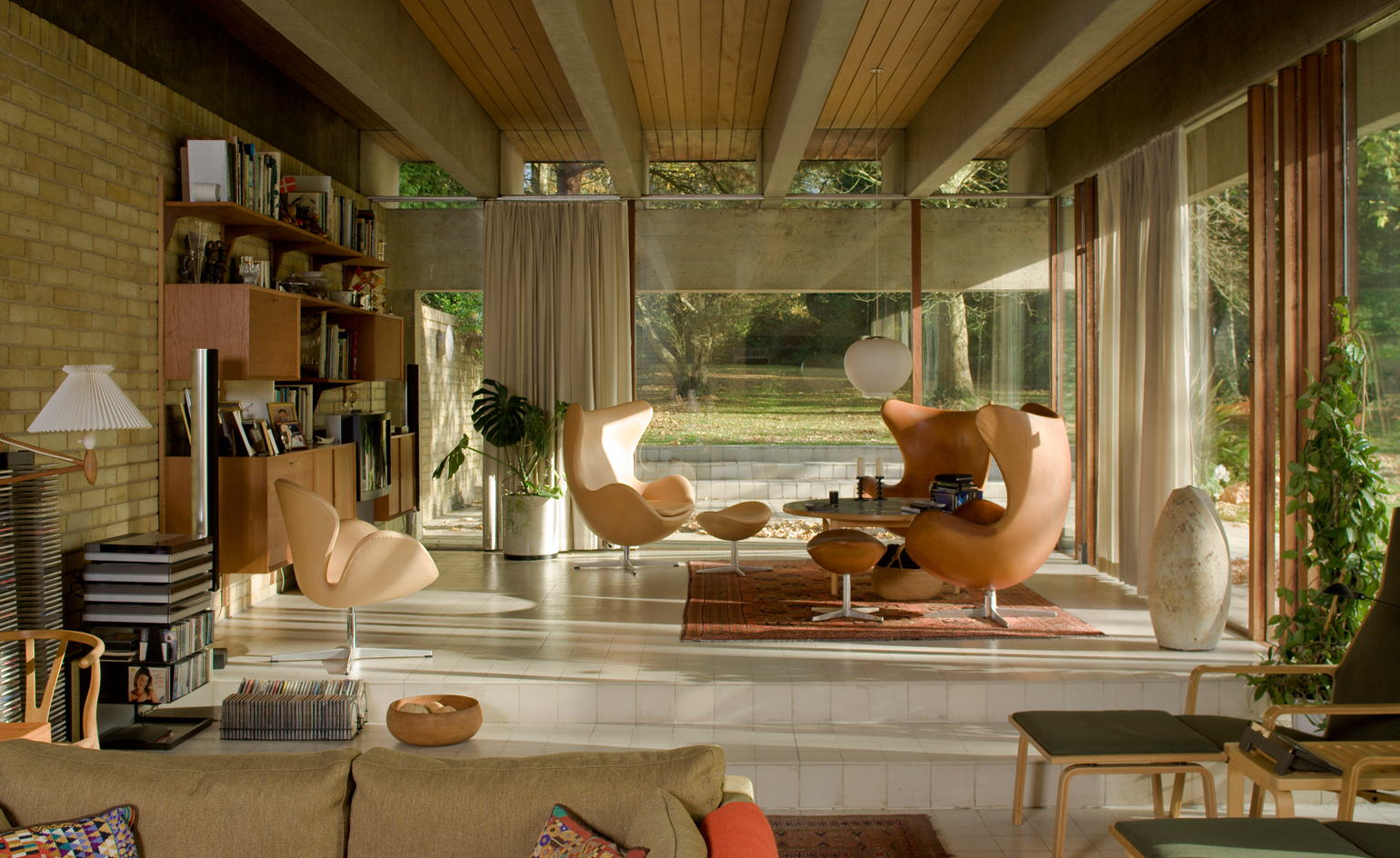
Ahm House, by Jørn Utzon and Povl Ahm, 1962. As well as emphasising a strong relationship between the interior and garden, the house – located in Herfordshire – was also a showcase for Danish product design, including these original Arne Jacobsen ‘Egg’ chairs and stools, designed in 1958.
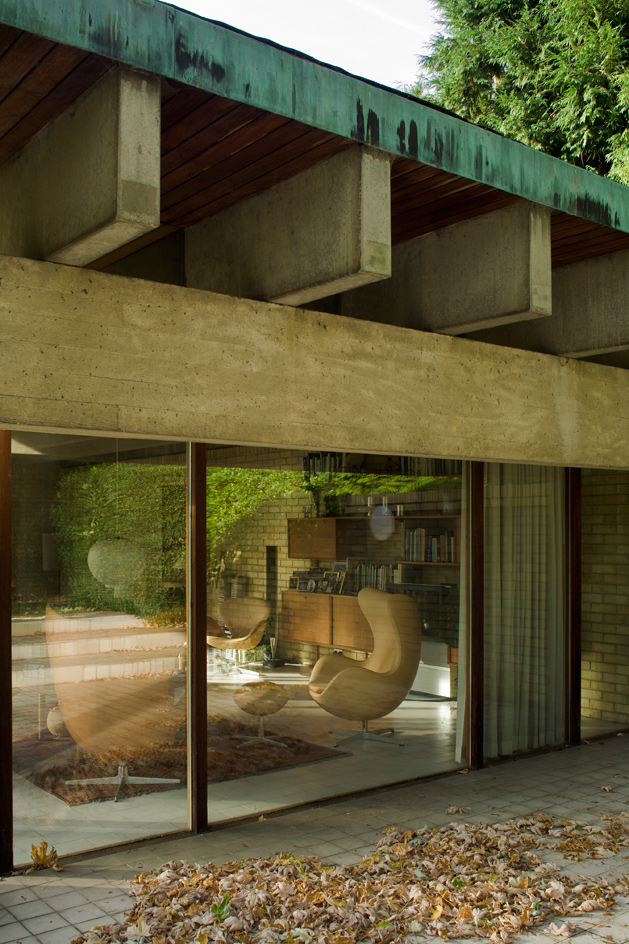
The main living area has high ceilings, with changes in level throughout the plan to the bedrooms and kitchen. The internal flooring is continued out onto the terrace.
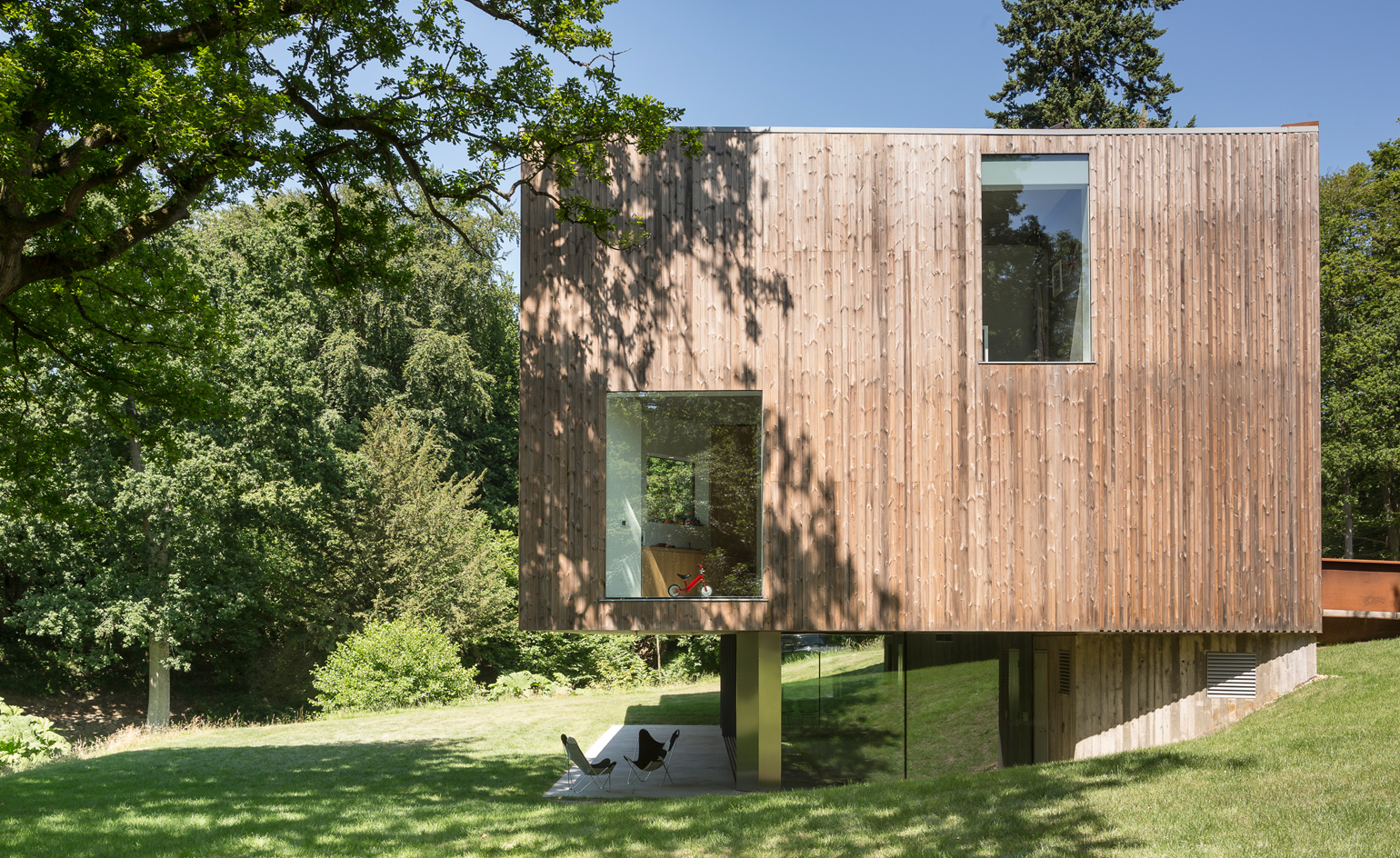
Red Bridge House, by Piers Smerin, 2013. This striking contemporary house nestles in a 22-acre site in the East Sussex countryside
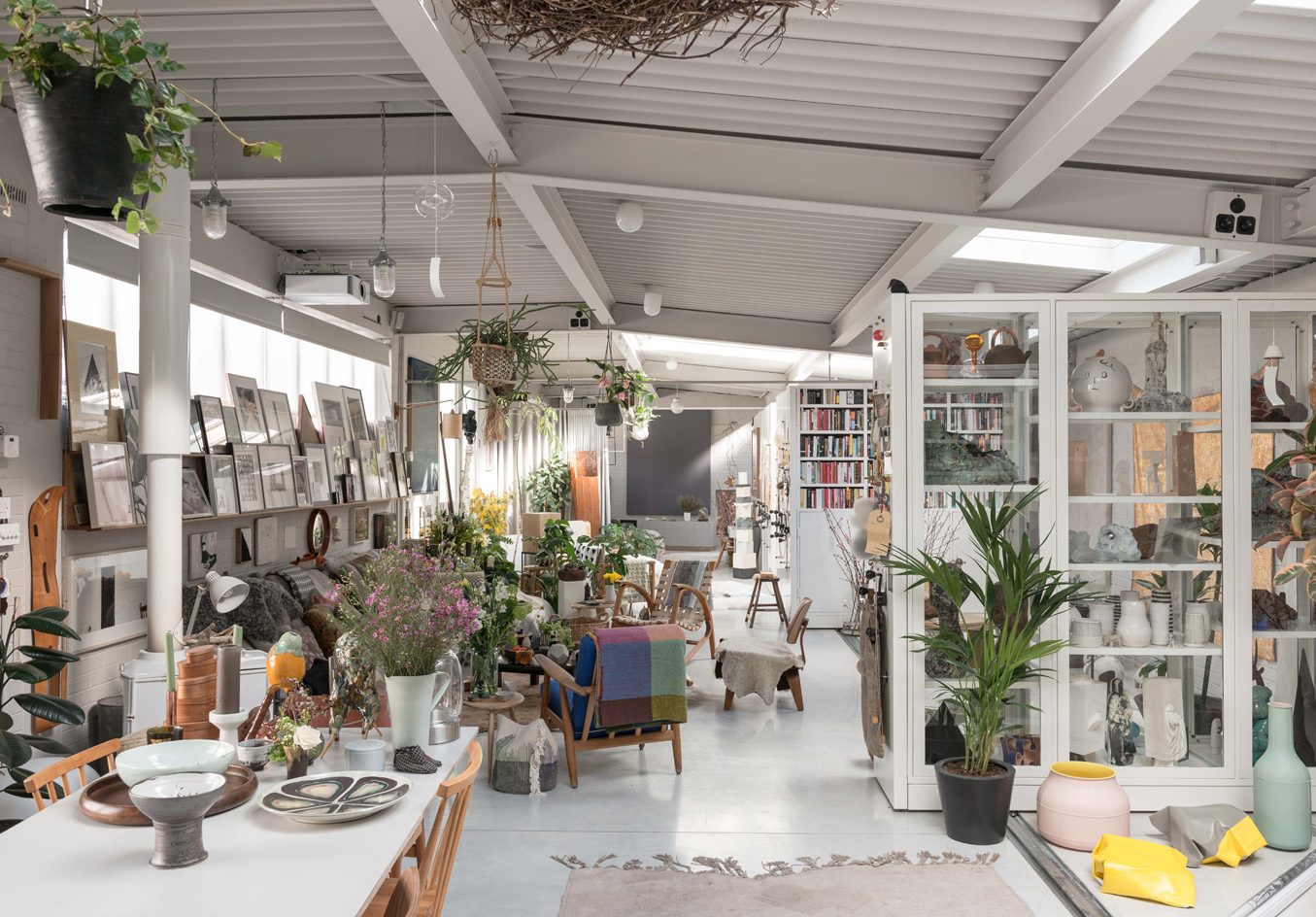
A view along the main living space inside a north London home designed by 6a Architects. The bays in the original roof structure create loose subdivisions, and museum archive dividers set on floor runners can be rolled out across the space for further flexibility.
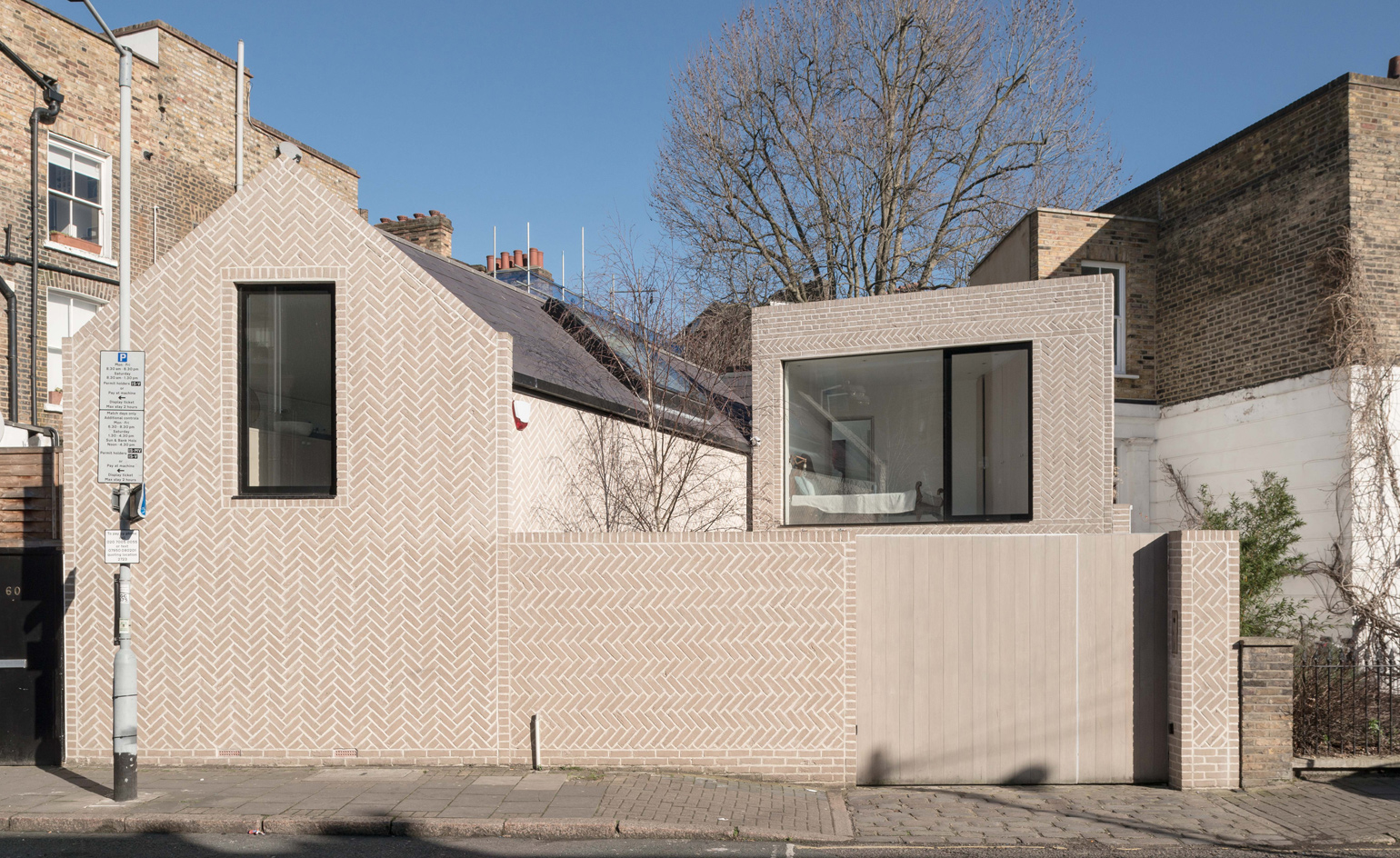
Designed by Zoe Chan and Merlin Eayrs and completed in 2014, The Herringbone House occupies a 129 sq m triangular site in Dalston. The street facade is dominated by the patterned brickwork and austere, stripped-back gable with its single, frameless window to the master bathroom.
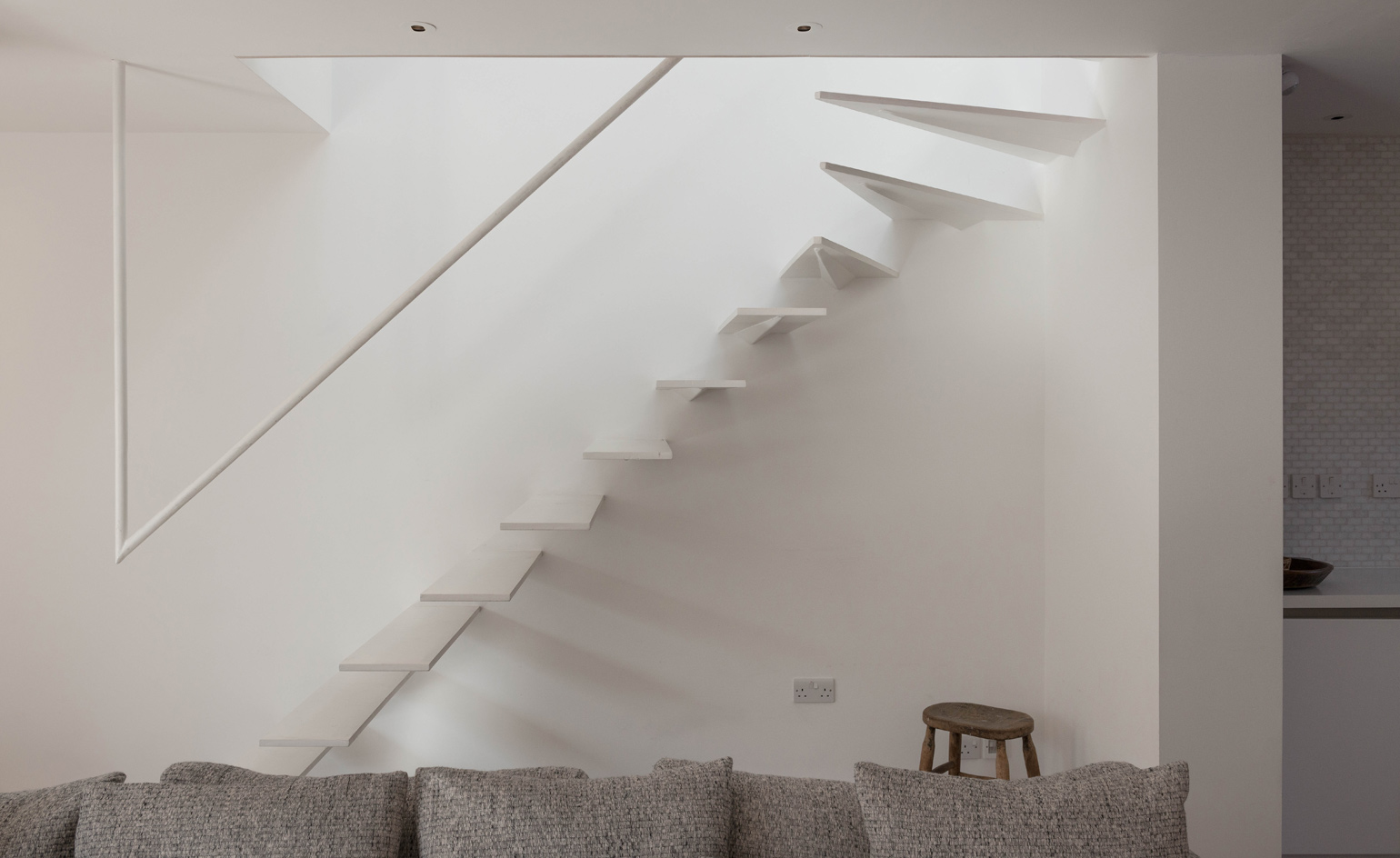
The house’s staircase is formed from steel, cantilevered from the walls with open treads and a single handrail.
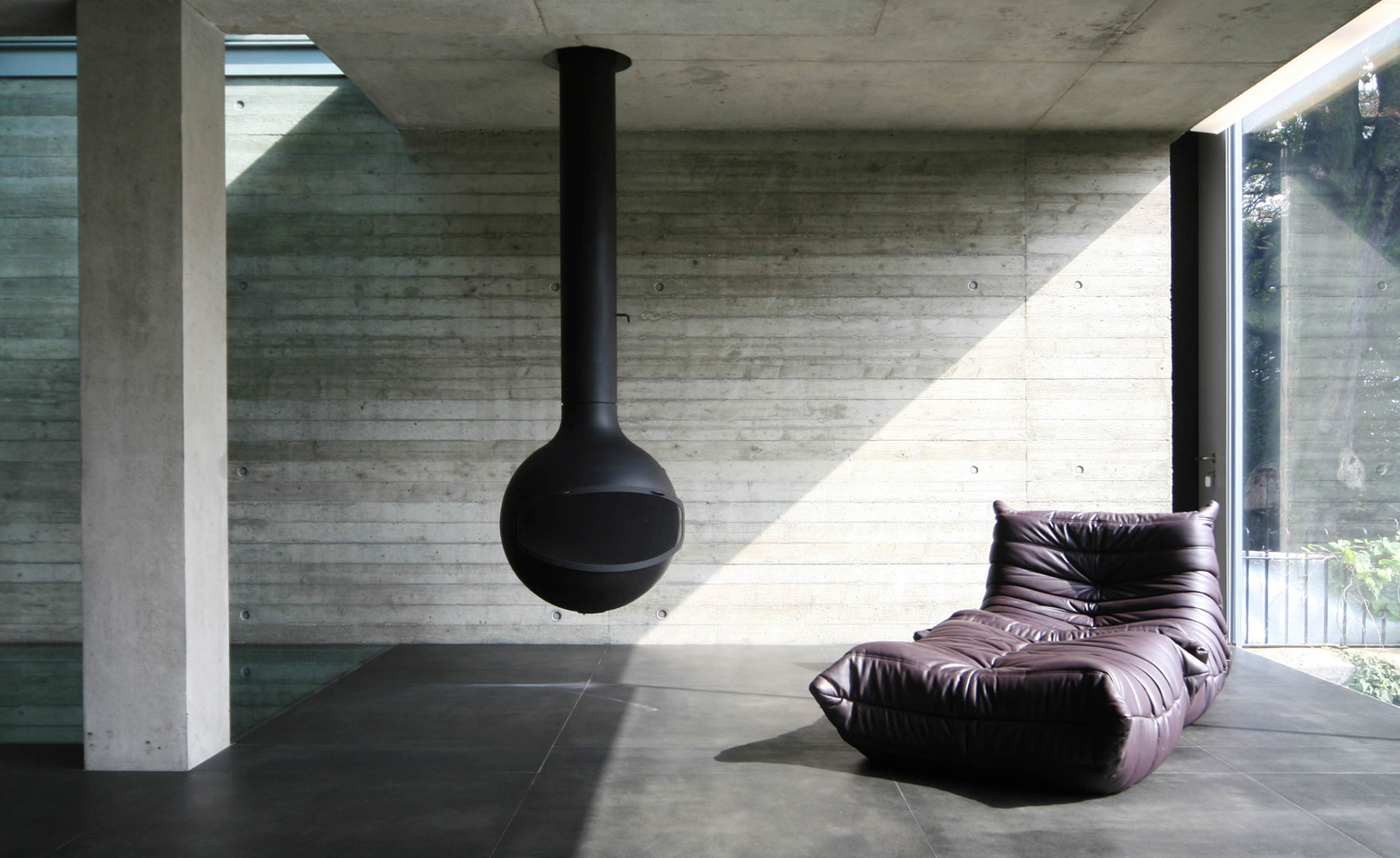
House in Highgate Cemetery, by Eldridge Smerin, 2008. The internal finishes include the extensive use of textured timber shuttered concrete, giving the house great thermal efficiency and a high environmental rating.
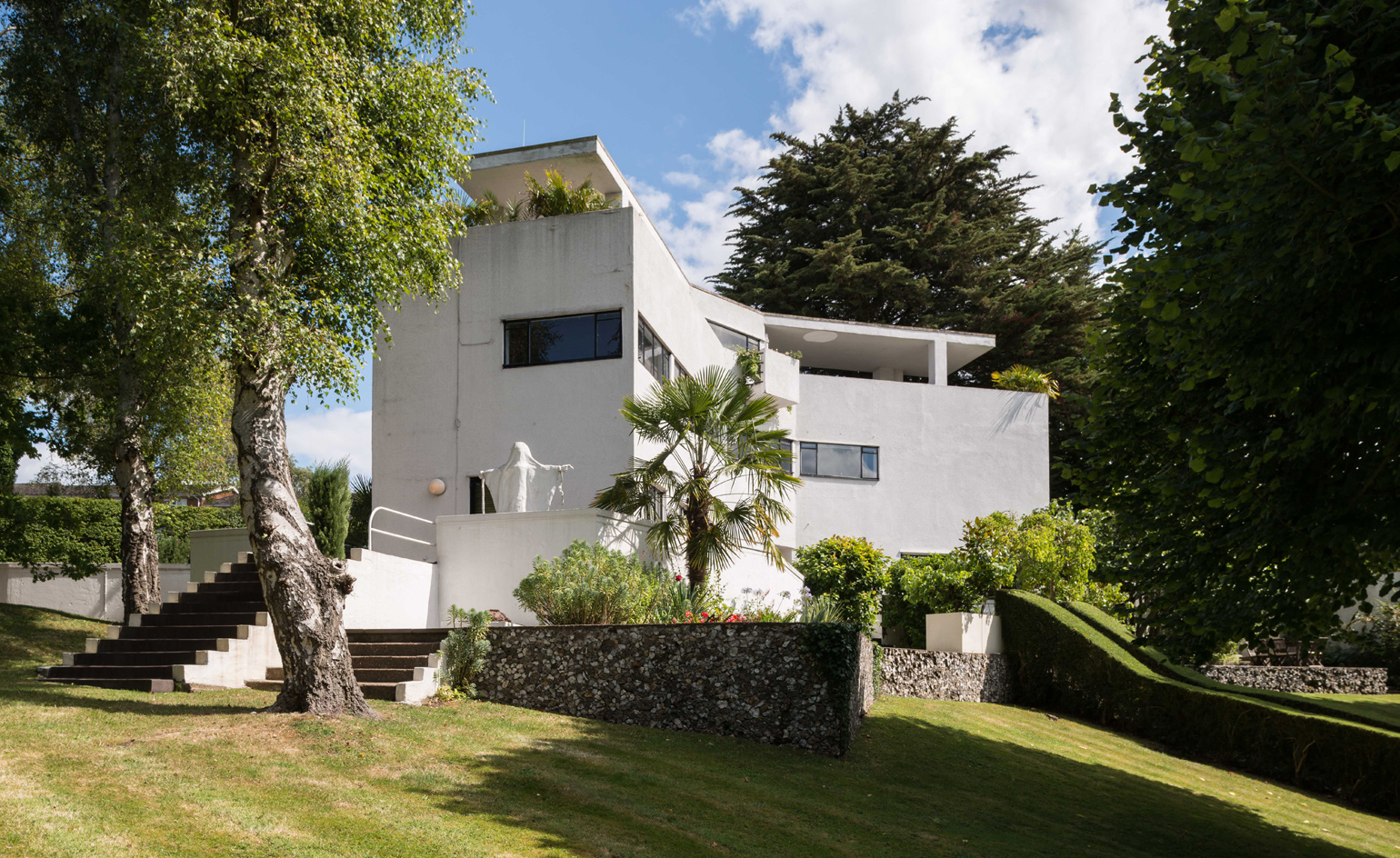
High & Over, by Amyas Connell, 1929. The mature landscape surrounding the house is very different from its original bare 12 acre hillside plot. The stark white concrete has weathered with age yet the house retains its bold, uncomprimising form.
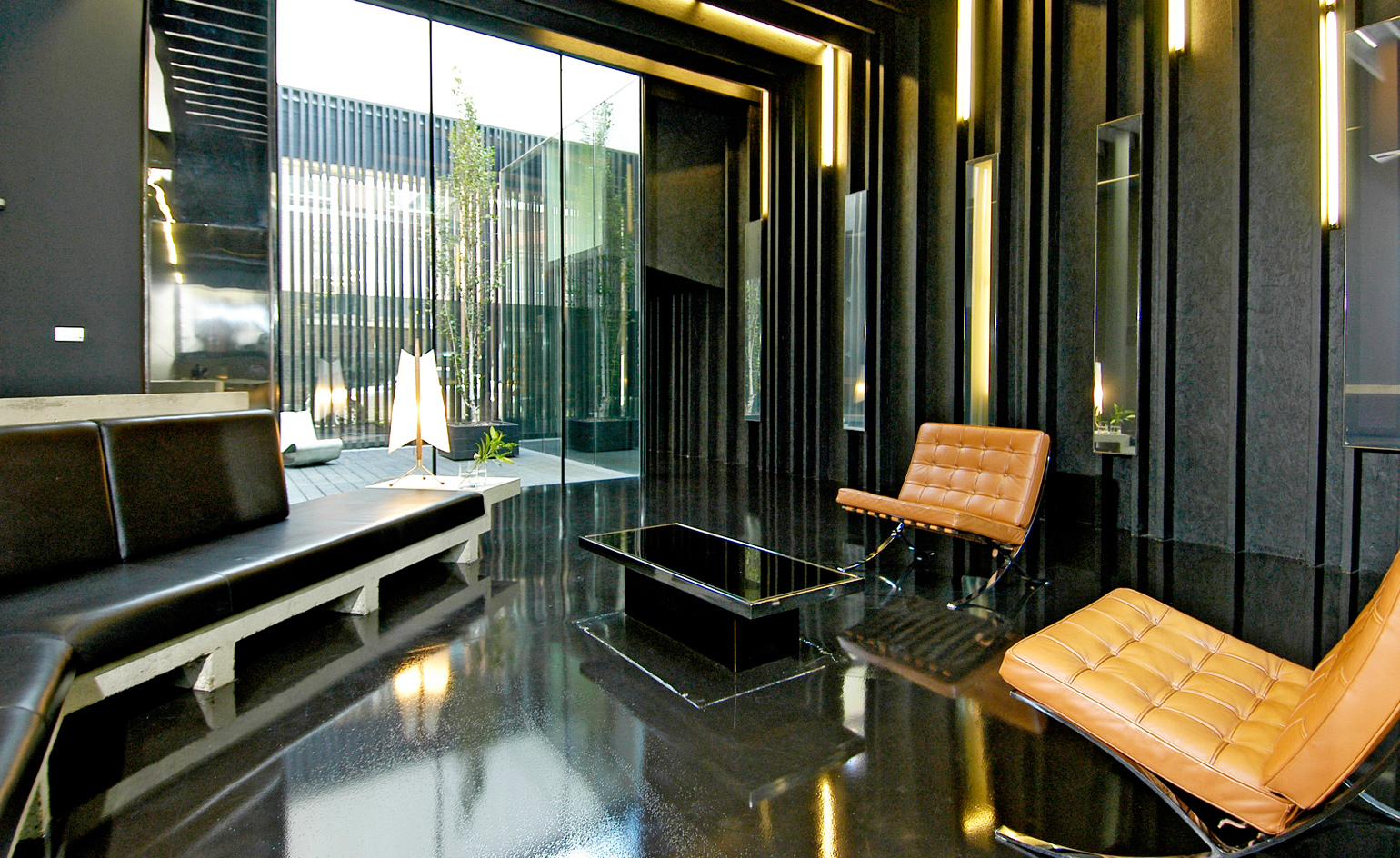
Lost House, by Adjaye Associates, 2003. The Lost House is the work of David Adjaye, commissioned by fashion entrepreneur Philip de Mesquita and designer Roksanda Illincic. The architect’s brief was for a rich, complex interior, a space for entertaining and presentation
INFORMATION
Published by Artifice Books, £29.95
Wallpaper* Newsletter
Receive our daily digest of inspiration, escapism and design stories from around the world direct to your inbox.
-
 Put these emerging artists on your radar
Put these emerging artists on your radarThis crop of six new talents is poised to shake up the art world. Get to know them now
By Tianna Williams
-
 Dining at Pyrá feels like a Mediterranean kiss on both cheeks
Dining at Pyrá feels like a Mediterranean kiss on both cheeksDesigned by House of Dré, this Lonsdale Road addition dishes up an enticing fusion of Greek and Spanish cooking
By Sofia de la Cruz
-
 Creased, crumpled: S/S 2025 menswear is about clothes that have ‘lived a life’
Creased, crumpled: S/S 2025 menswear is about clothes that have ‘lived a life’The S/S 2025 menswear collections see designers embrace the creased and the crumpled, conjuring a mood of laidback languor that ran through the season – captured here by photographer Steve Harnacke and stylist Nicola Neri for Wallpaper*
By Jack Moss
-
 An octogenarian’s north London home is bold with utilitarian authenticity
An octogenarian’s north London home is bold with utilitarian authenticityWoodbury residence is a north London home by Of Architecture, inspired by 20th-century design and rooted in functionality
By Tianna Williams
-
 What is DeafSpace and how can it enhance architecture for everyone?
What is DeafSpace and how can it enhance architecture for everyone?DeafSpace learnings can help create profoundly sense-centric architecture; why shouldn't groundbreaking designs also be inclusive?
By Teshome Douglas-Campbell
-
 The dream of the flat-pack home continues with this elegant modular cabin design from Koto
The dream of the flat-pack home continues with this elegant modular cabin design from KotoThe Niwa modular cabin series by UK-based Koto architects offers a range of elegant retreats, designed for easy installation and a variety of uses
By Jonathan Bell
-
 Are Derwent London's new lounges the future of workspace?
Are Derwent London's new lounges the future of workspace?Property developer Derwent London’s new lounges – created for tenants of its offices – work harder to promote community and connection for their users
By Emily Wright
-
 Showing off its gargoyles and curves, The Gradel Quadrangles opens in Oxford
Showing off its gargoyles and curves, The Gradel Quadrangles opens in OxfordThe Gradel Quadrangles, designed by David Kohn Architects, brings a touch of playfulness to Oxford through a modern interpretation of historical architecture
By Shawn Adams
-
 A Norfolk bungalow has been transformed through a deft sculptural remodelling
A Norfolk bungalow has been transformed through a deft sculptural remodellingNorth Sea East Wood is the radical overhaul of a Norfolk bungalow, designed to open up the property to sea and garden views
By Jonathan Bell
-
 A new concrete extension opens up this Stoke Newington house to its garden
A new concrete extension opens up this Stoke Newington house to its gardenArchitects Bindloss Dawes' concrete extension has brought a considered material palette to this elegant Victorian family house
By Jonathan Bell
-
 A former garage is transformed into a compact but multifunctional space
A former garage is transformed into a compact but multifunctional spaceA multifunctional, compact house by Francesco Pierazzi is created through a unique spatial arrangement in the heart of the Surrey countryside
By Jonathan Bell